"Why should the poor live in slums if there are empty offices in the city?" - Justin McGuirk
Curator Justin McGuirk tells us why his Golden Lion-winning installation about a community living in a vertical slum in Caracas could set an example for new forms of urban housing, in this movie we filmed at the Venice Architecture Biennale.
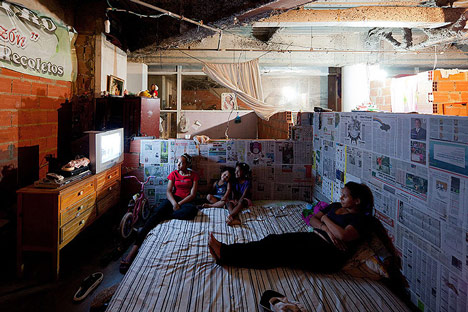
"Why should the majority of the poor in countries like Venezuela be forced to live in the slums around the edge of cities if there are empty office towers in the city centres?," he says.
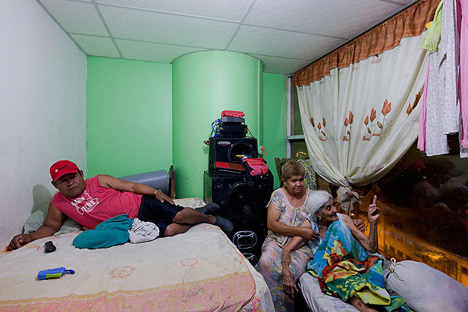
McGuirk teamed up with architects Urban-Think Tank and photographer Iwan Baan to create the Torre David/Gran Horizonte exhibition and restaurant, which presents the findings of a year-long research project.
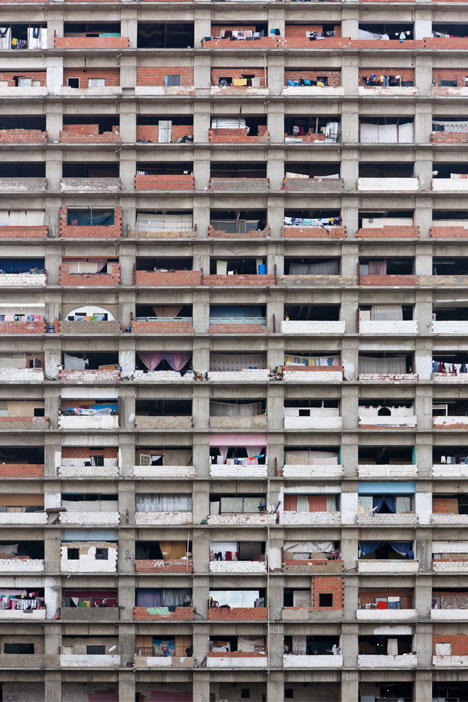
The 45-storey Torre David skyscraper was designed for a financial organisation in the 1990s, but construction was abandoned following the the death of the developer and squatters began moving in. The building is now home to around 3000 residents, who have adapted the concrete shell by partitioning off rooms to suit their needs.
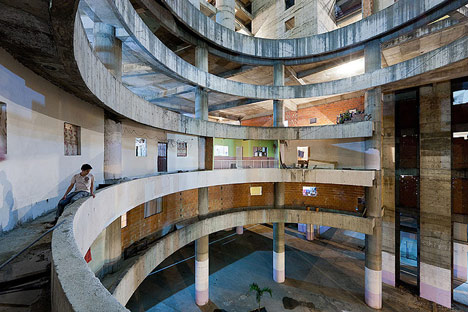
"When you look inside you will find that the apartments are actually like any middle class apartments in the world," said Urban-Think Tank founder Alfredo Brillembourg at the preview on Monday. "So this is not a slum; the slum is in your head."
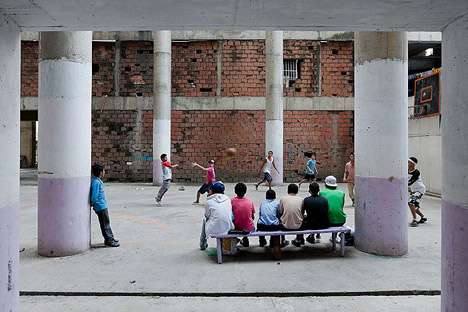
Photographs by Iwan Bann displayed in the Arsenale exhibition show how businesses and groups also occupy the building, including factories, hairdressers a gym and even a church. "We’ve mapped how people have built a whole infrastructure and city themselves," said Baan.
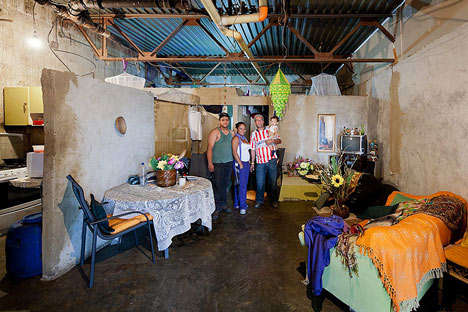
The pop-up Venezuelan restaurant brings a flavour of Caracas to the exhibition, illustrating the team's belief that "sharing a meal is the best way to establish common ground for a discussion."
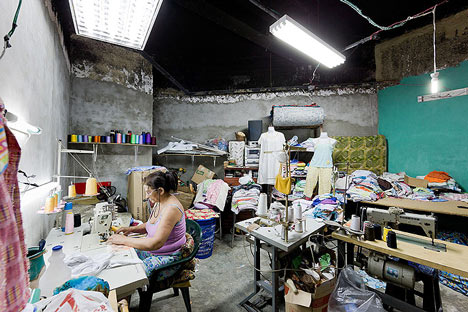
We also reported on the project earlier this week, when it was awarded the Golden Lion for best project at the biennale.
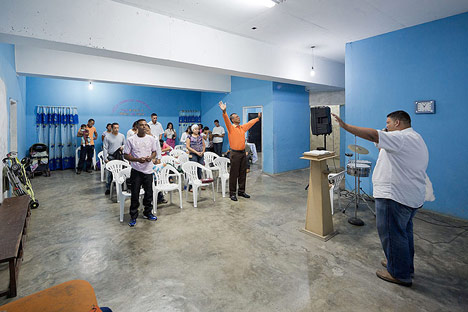
See all our coverage of the Venice Architecture Biennale »
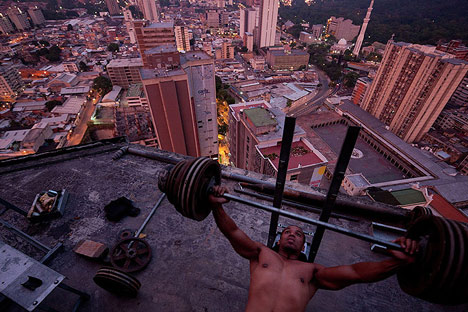
Photography is by Iwan Baan.
Here's some more information from Urban-Think Tank:
Torre David, a 45-story office tower in Caracas designed by the distinguished Venezuelan architect Enrique Gómez, was almost complete when it was abandoned following the death of its developer, David Brillembourg, in 1993 and the collapse of the Venezuelan economy in 1994.
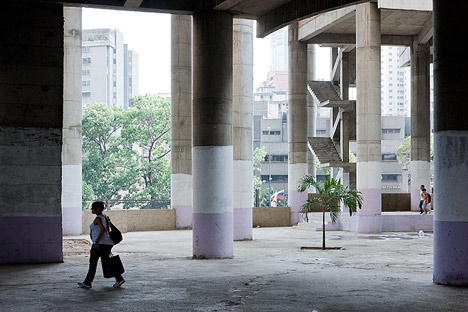
Today, it is the improvised home of a community of more than 750 families, living in an extra- legal and tenuous occupation that some have called a vertical slum.
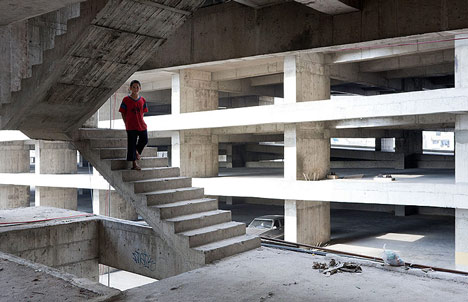
Alfredo Brillembourg and Hubert Klumpner, along with their research and design teams at Urban-Think Tank and ETH Zürich, spent a year studying the physical and social organization of this ruin-turned-home. Where some only see a failed development project, U-TT has conceived it as a laboratory for the study of the informal.
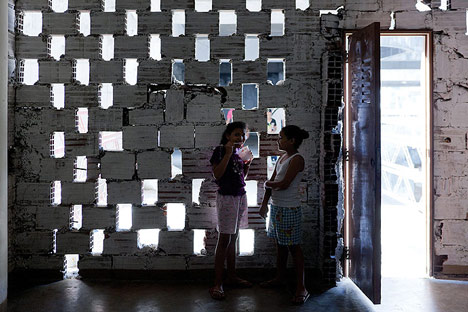
In this exhibit and in their forthcoming book, Torre David: Informal Vertical Communities, the architects lay out their vision for practical, sustainable interventions in Torre David and similar informal settlements around the world.
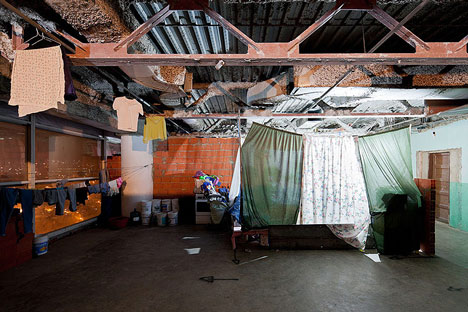
They argue that the future of urban development lies in collaboration among architects, private enterprise, and the global population of slum-dwellers. Brillembourg and Klumpner issue a call to arms to their fellow architects to see in the informal settlements of the world a potential for innovation and experimentation, with the goal of putting design in the service of a more equitable and sustainable future.
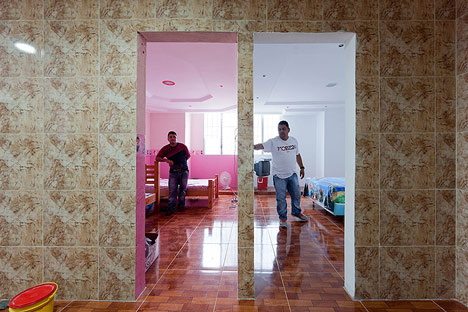
In the spirit of the Biennale’s theme, Common Ground, the installation takes the form of a Venezuelan arepa restaurant, creating a genuinely social space rather than a didactic exhibition space. The residents of Torre David have similarly created a variety of common grounds—for sports, leisure, worship, and meetings—that reinforce the cohesive nature of this settlement.
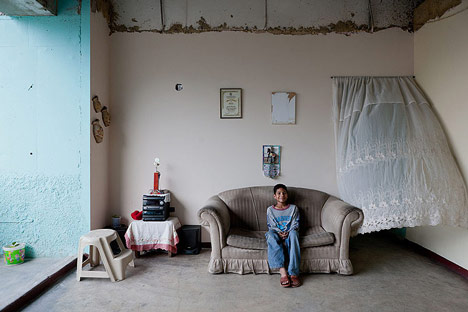
Even before its opening, this installation has become controversial in the Venezuelan architectural community. Many are dismayed that the nation’s architectural accomplishments are “represented” by a never-completed and “ruined” work; others argue that the exhibit condones the Venezuelan government’s tacit and explicit support of illegal seizure and occupation of property. In fact, none of these positions reflects the true nature and purpose of the exhibit.
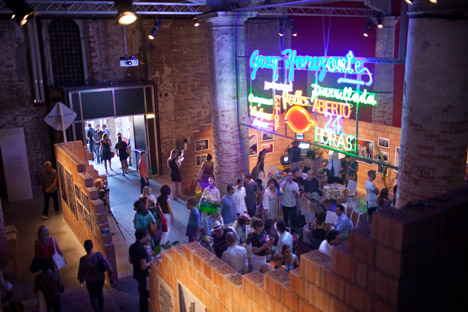
Above: the installation at the Arsenale
It, and its creators, avoid taking political sides, arguing that Torre David represents not Venezuelan architecture but rather an experiment in informal/formal hybridity and a critical moment in the global phenomenon of informal living.
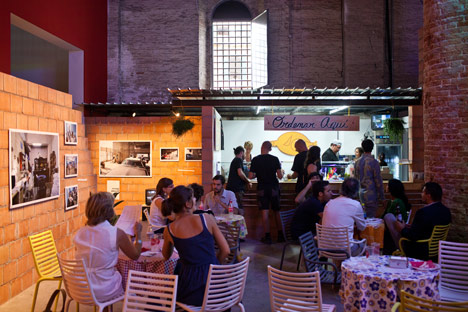
Above: the restaurant
With the aim of developing the debate over Torre David and similar sites in other cities, the installation includes many of the letters and newspaper articles that have appeared in response to the announcement of this exhibition.